I haven't encountered much from the Guyi tea factory, and that which I have has come entirely from Singaporean teameister, the ever-generous Keng. This 2009 cake comes under the factory's "Yubang" label, where "Gushu chawang" means "Ancient-tree tea-king".
edit: mushu! (see comments)
On first unwrapping, I was surprised by its appearance. Have a glance at the image below, and see if you can see what I mean.
The colours are quite accurate, for once, in this photograph, and we can see that it contains a blend of huangpian [yellow flakes], standard black/brown leaves, and a significant quantity of reddened leaves.
The aroma of the dry leaves is similarly surprising: I was not expecting to be greeted by the gentle sweet vanilla of shicang [wet storage], which hangs about the leaves in a gentle manner.
The main leaves themselves appear to be healthily large fragments of decent leaves, which result in a solid yellow-orange soup.
Our initial supposition seems to be correct, and the flavours of granary, sweet, raw shengpu have been cleanly blended with a redder, maltier character from the pre-oxidised leaves.
There are many "drink it now" cakes on the market, but this one is clean, crisp, and well-presented. It doesn't have the most enormous huigan known to man, but there is something decent waiting in the finish.
One of the most striking aspects of this tea is the overtone of swollen, sticky fruits, which reminds me of the over-the-top, yet very enjoyable, sweetness of purple-leaf pu'ercha. This may come from the reddened leaves, in a wulong / dancong style, but it adds a little charm at this breakfast-time tea session.
It sells for around 150 RMB on Taobao, for the 2009 version, and for around 180 RMB for the 2007 version, for those interested in what turned out to be a solid cake suitable for immediate enjoyment. Thanks again to Keng for sending us this crisp, sweet, and fruity bing.

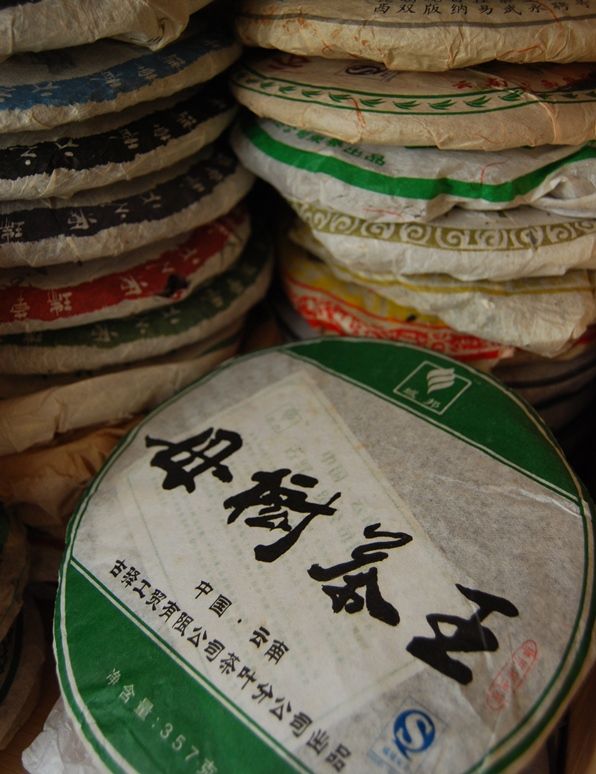
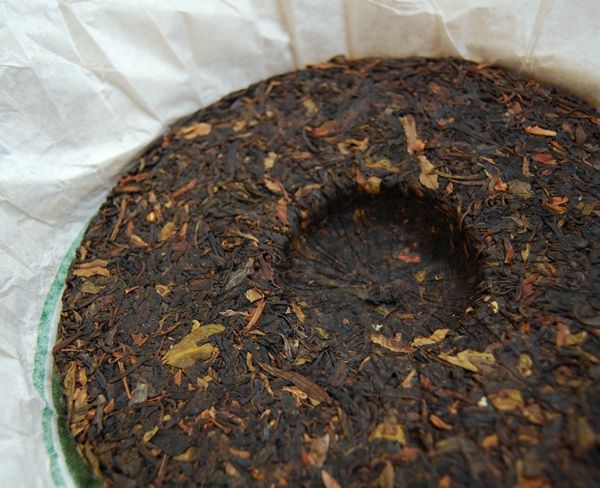
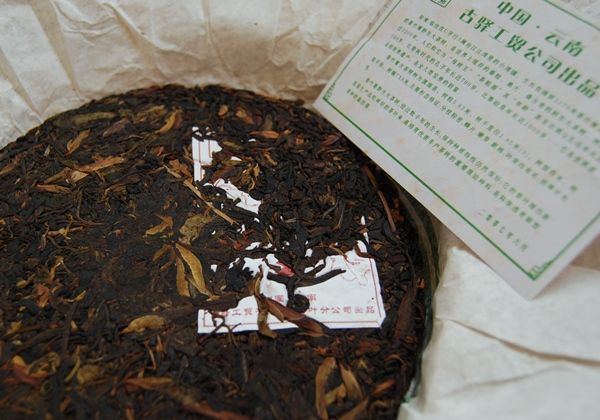
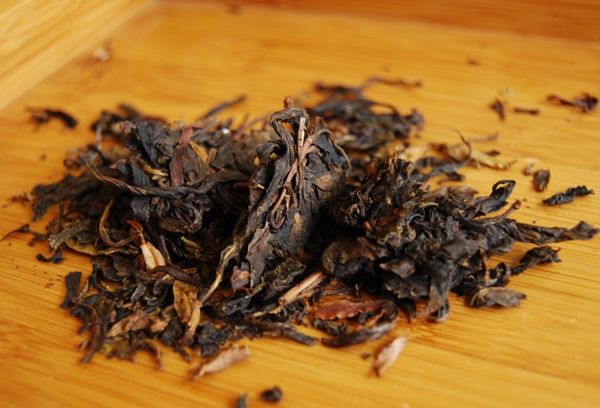
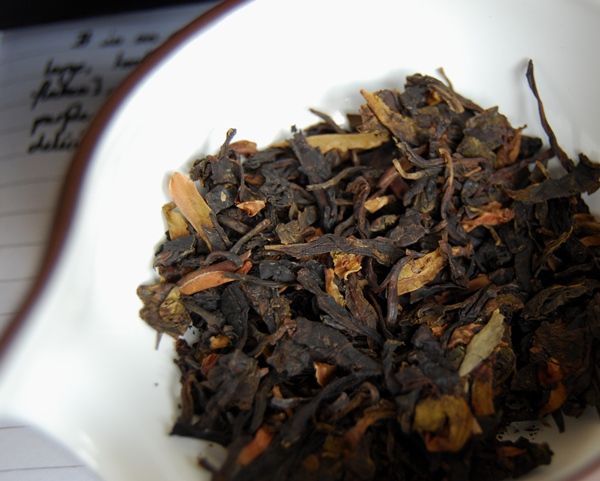

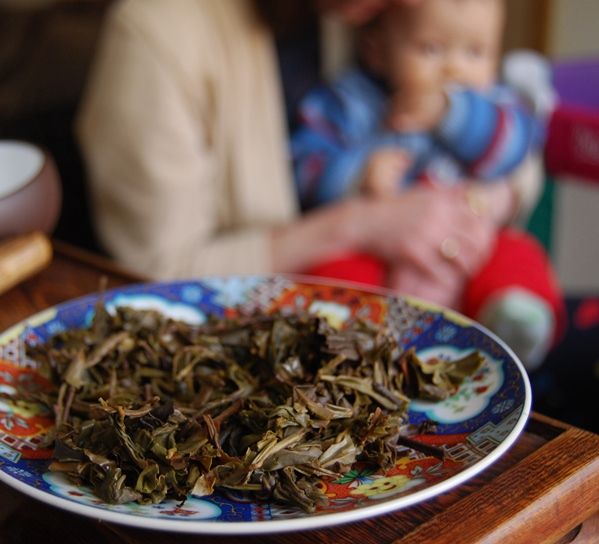
8 comments:
This cake is composed of wild varietal tea... it's not Yunnan Large Leaf varietal. 野生茶。 Totally different tea.
Scott
/me holds in giggles...
Looks like you got to drinking that wierdo stuff again!
Anways, I guess it was always obvious you were going to save the potential dashing of hopes for last, eh?
Of course, there's that old maocha that indubitably seeks to be in sync with your amygdala, but hey, won't you need that to sooth any disappointment with CGHT tea?
--shah8
What Scott said -- this is the "wild" varietal, which has that unique flavour profile and would give you that sweetness. Also, a point of correction -- it's mushu, not gushu, on the wrapper.
Hi chaps,
The yesheng leaves would explain this oddness. Very pleasant, nonetheless.
Gu/mu is me misreading my own handwriting, when I come to type up notes from a tea that I tasted two months ago. Thanks for the correction. :)
Toodlepip,
Hobbes
This cake looks like a 2005 Xiaguan Ancient Wild Trees I had purchased a few years ago via Yunnan Sourcing.
I agree with Lionel-- this looks, and sounds, a lot like the Xiaguan 2005 Ancient Wild Cake.
Ben
To expand on Scott's take, this is likely not even Camellia Sinensis, perhaps some other species in the genre of theaceae. At least some of those yellow bits are the buds of this plant, akin to ya bao, not all huang pian.
I don't know what to make of the genre. I just finished drinking one of this type that was made in 2005 or 6. It tasted barely aged, but had been stored too dry, I think. It was very fruity in flavor, and heavy enough it upset my stomach--something sheng pu never does to me.
If any HK sellers have that Xiaguan wild cake people reference here, knowing how it aged in "wetter" dry storage conditions would yield more information about the aging of this style of leaf.
I really don't quite understand why there is so much of it? It plainly really offends a segment of the market, and I'm not sure who just absolutely loves it over normal sheng.
--shah8
Post a Comment